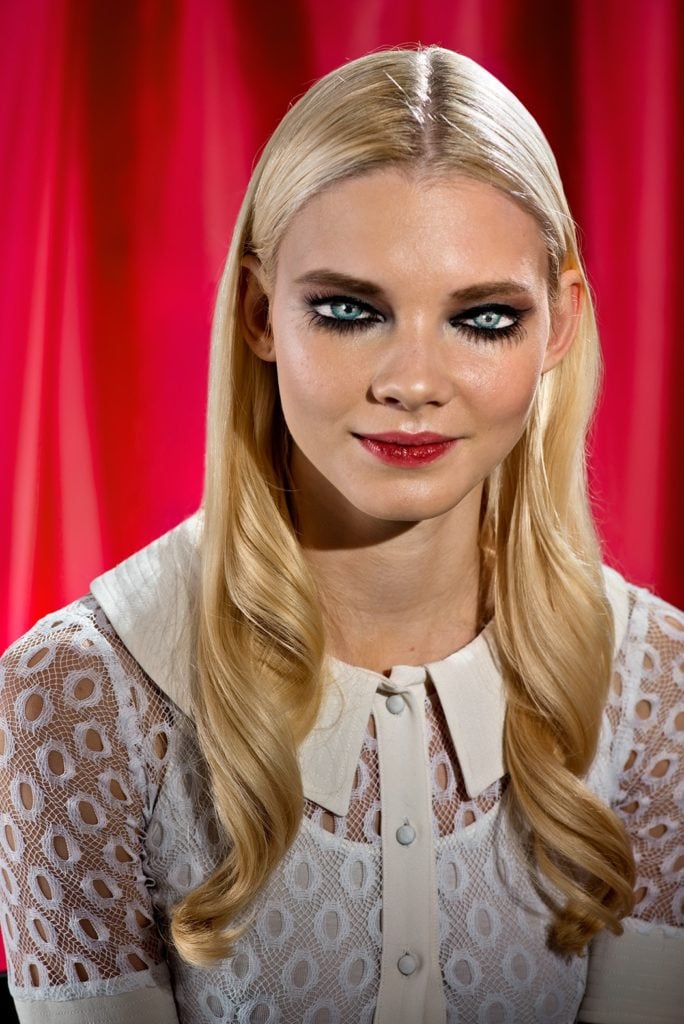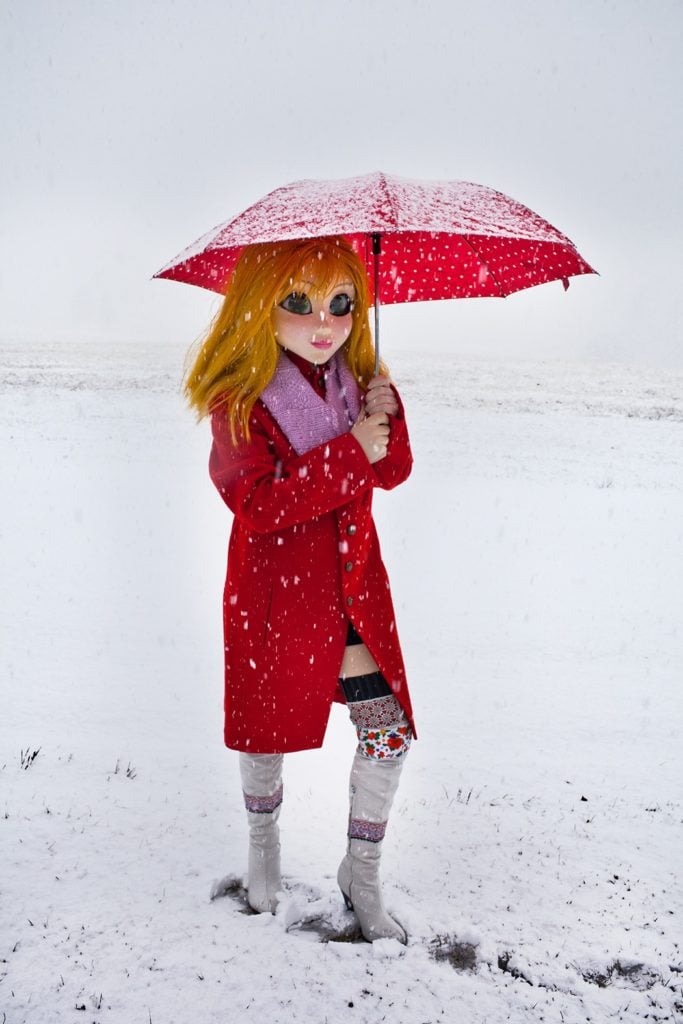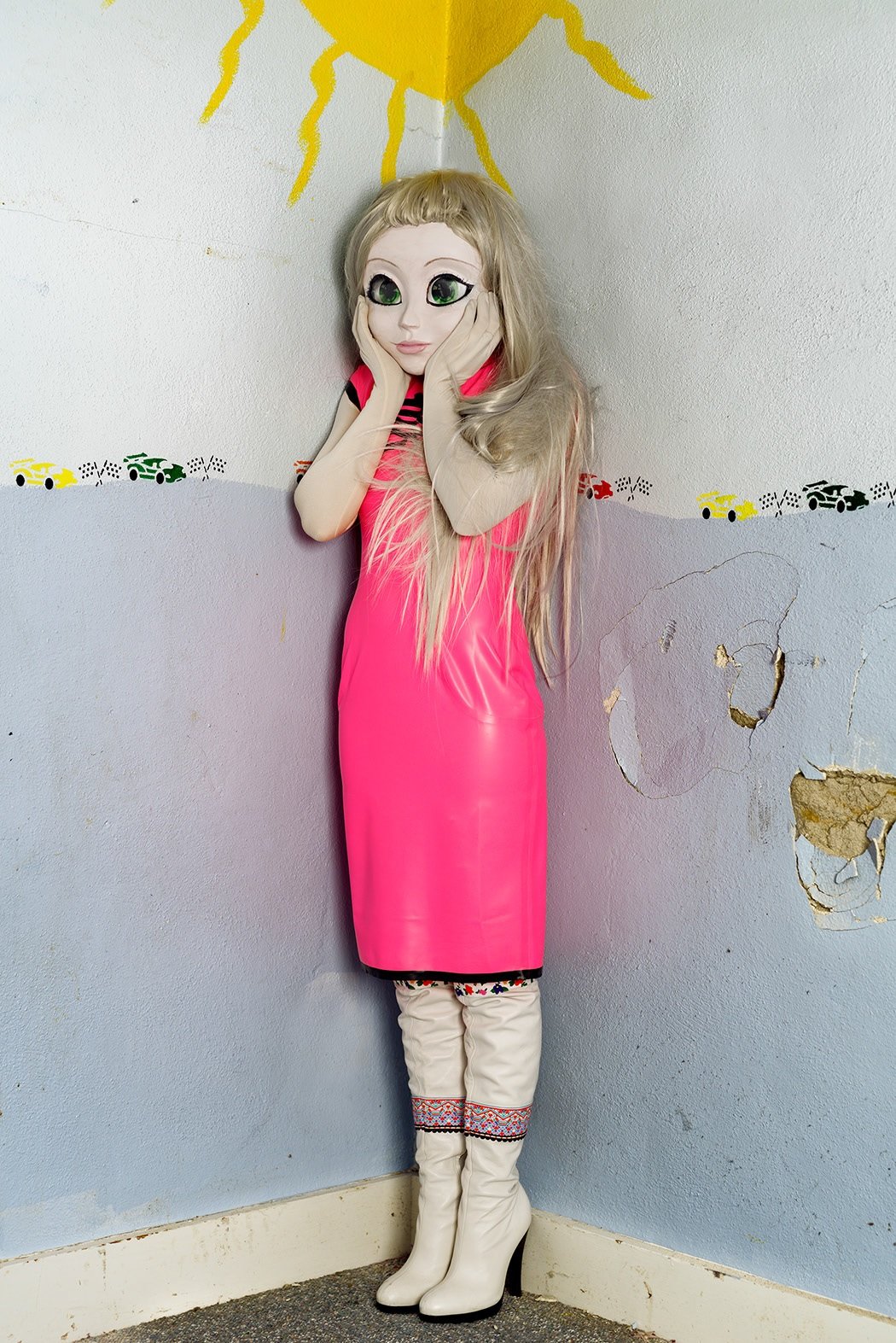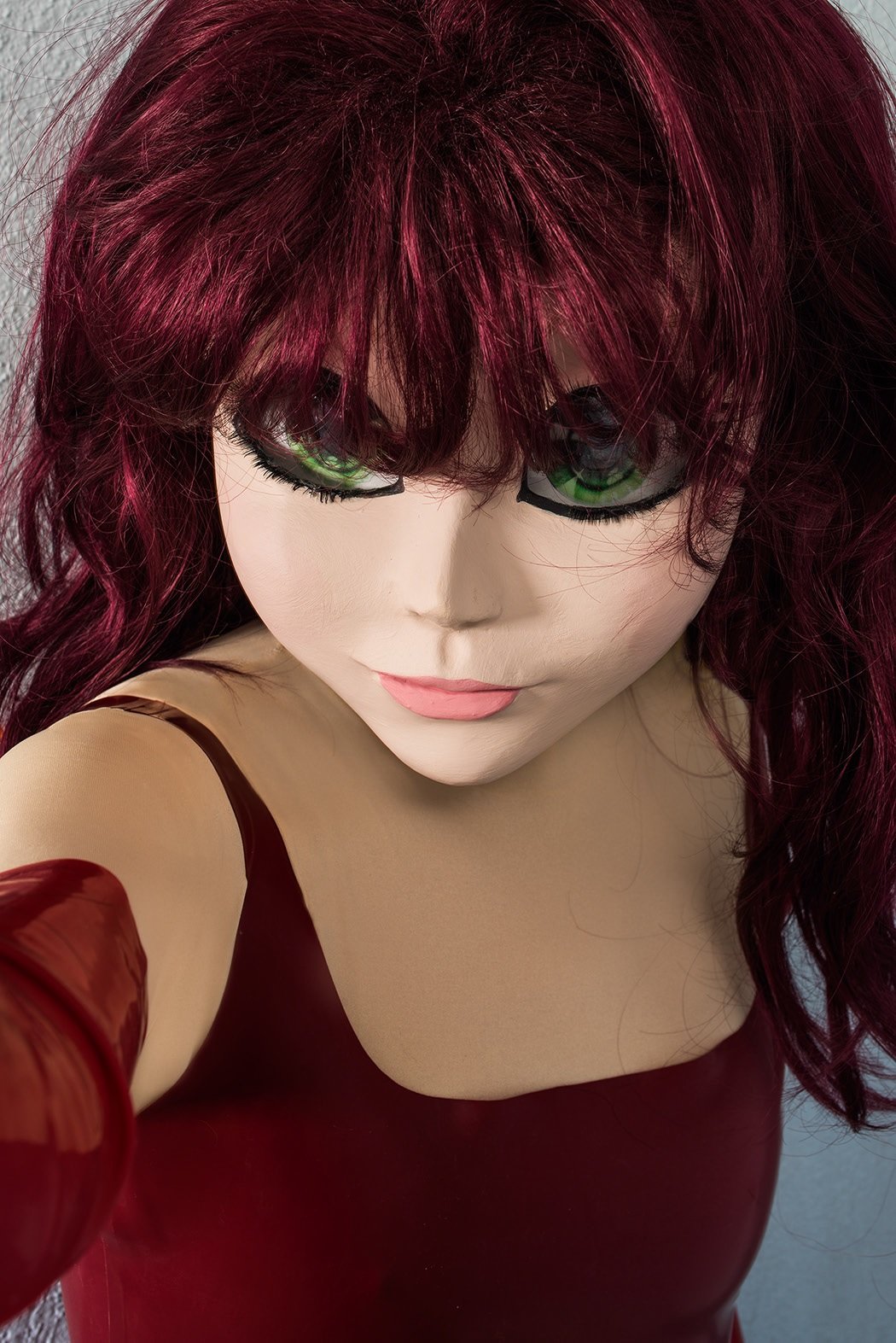Galleries
How Artist Laurie Simmons Dolls People Up
An interview with Laurie Simmons about the ways she brings a 2-D element to our 3-D world.

An interview with Laurie Simmons about the ways she brings a 2-D element to our 3-D world.

Jeffrey Grunthaner

Laurie Simmons’s new show, “Kigurumi, Dollers, and How We See,” portrays women in interior spaces. What distinguishes this new work from her series “The Love Doll: Days 1–30,” however, is the way “interior” is represented. Space is not only the rooms in a house—domesticity being a common theme in Simmons’s work—but also the inward space of introspection, intensified by masks and the lens of a digital camera.
In her photos of cosplayers or “dollers” (“cosplay” being short for “costume play” and dollers being a subset of kigurumi, which includes people who dress in spandex bodysuits to represent cartoon characters) masks form sensual latex skins; in the “How We See” series, women “wear” painted-on eyes over their real eyes, masking the distance between viewer and object. In both cases, direct relationships with others are concealed, and a surface is substituted for reality.
I spoke with Simmons over the phone in late February, about two weeks before this current show opened at Salon 94’s Bowery location. Fascinated by the complex relationship between truth and unreality in the new photos, I discussed with her their connection to her previous work and the emotional bonds we form with masks.

Laurie Simmons, Orange Hair/Snow/Close Up (2014). Photo: courtesy the artist, Salon 94.
Jeffrey Grunthaner: When the kigurumi photos are actually hung, they have a human-sized scale. Is this a deliberate maneuver in terms of how you decided to present the work?
Laurie Simmons: Yes. The last series, “The Love Doll,” I printed to human scale too—because it was the first time I’d ever really used a human scale prop. And it was really important to keep it in the scale that I discovered it in. The same thing with the kigurumi, with the maskers: I wanted them to be approached, to feel the same way they felt when I was in their presence.
JG: What about the more portrait-oriented pieces? The selfies, for instance, they scale differently.
LS: With the selfies I was thinking about the way people are transmitting information via twitter and the phone and the scale of a selfie. We’re getting used to seeing that up-close-and-personal scale in phone size. I wanted to make those pictures smaller, but clearly I didn’t go down to iPhone scale. I kept traditional portrait scale—almost 20 inches by 30 inches. I think an average size for portraits in the National Portrait Gallery is something like 23 inches by 33 inches. So I kept them to that kind of scale, which is much smaller than the way I usually work. They have a kind of intimacy, so I didn’t want there to be any intimidation in terms of approaching the ones that are selfies.

Laurie Simmons, Yellow Hair/Red Coat/Umbrella/Snow (2014). Courtesy of the artist and Salon 94.
JG: You seem to be referencing traditional portraiture. On the other hand, these are very hybrid works. Have you discovered a different way of approaching portraiture through these photos? Did you use portraiture as a fixed reference point you could allude to in order to make the series work?
LS: What works about them for me is I’m taking traditional photographic approaches with these characters, but the characters themselves are hybrids. They exist in some interstitial space between doll and human, animate and inanimate. I always feel when the subject matter is really awkward, or strange, or gets to the place that I want it to be, that it works or is offset by treating it as directly and traditionally as possible, photographically speaking.

Laurie Simmons, Blonde/Pink Dress/Standing Corner (2014).
Courtesy the artist, Salon 94.
JG: As someone who makes movies, did you uncover any plots when you constructed environments for your kigurumi characters?
LS: I didn’t encounter plots. But I uncovered personalities. And that was the biggest surprise. Whenever I shoot, whenever I set about to make a series or create a project for myself, I set really strong parameters for myself. I feel real when my underpinnings are intensely and purely conceptual. I need to lay out a system for working. That’s when I feel valid as an artist—once I’ve put forth a system that I must adhere to. Of course, I’m allowed to break my own rules.
So once I discovered this house and knew I was going to shoot in the house, I set about to create a character for each room—understanding the colors of the room, the scale of the room. I planned what I would do in each place. Certain characters had to be in certain places and do certain things. And the big surprise was how the characters continued over the course of time to reveal themselves to me. Each character became more and more who I thought they were initially.
JG: Why did you decide to show the kigurumi together with the “How We See” photos?
LS: In my exploration of places to go, and things to look at—before I make my next work—I found these girls that were involved in this other anime convention which was to paint doll eyes on their eyelids, their closed eyes. And I thought: that’s really amazing. Once you do that, once you paint on these amazing eyes, you have to keep your eyes closed in order to have eyes. So you literally can’t see. And I thought that was such a great counterpoint to the maskers. I mean their eyes have to be closed for you to see their eyes. It was really odd when the models opened their eyes because I became attached, and found their painted-on eyes to be more beautiful than their real eyes.

Laurie Simmons, Redhead/Red Dress/Selfie (2014).
Courtesy the artist, Salon 94.
JG: Are the kigurumi just about cosplay? Is there an aspect of sexual fetishism to them?
LS: That didn’t come up. For me, there was a single figure posing in a costume, in a mask I created, in a setting I found. There was an audience, in the sense that I had a crew with me—two assistants, other models, other helpers. My maskers always knew they had an audience. But for me the most striking thing was how disappointed I was at the end of a session when my models unmasked, and my growing awareness that I was growing more and more attached to the characters. That was kind of weird. That was really strange: to know that I had a growing affection for the characters I was shooting. I kind of missed them when the shoot was over. In that sense, the photographs are like evidence or relics of this time that I got to spend with them.
Laurie Simmons’s “Kigurumi, Dollers, and How We See” continues at Salon 94 Bowery through April 28.